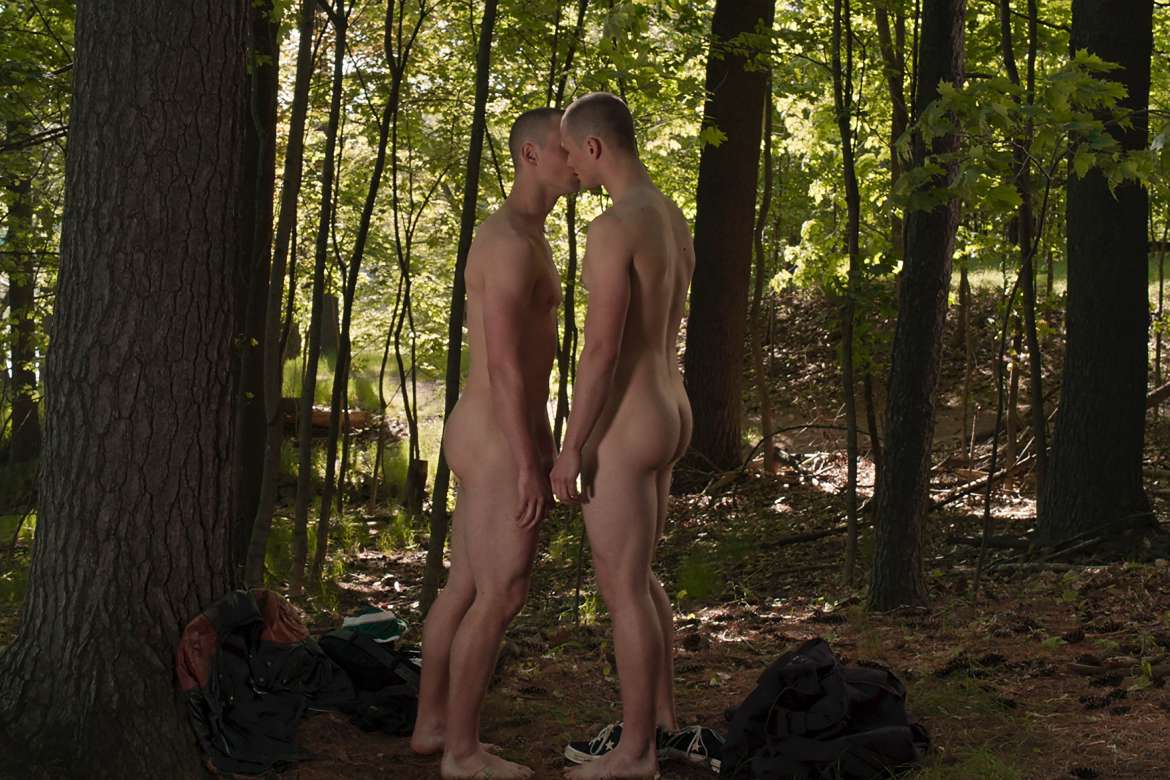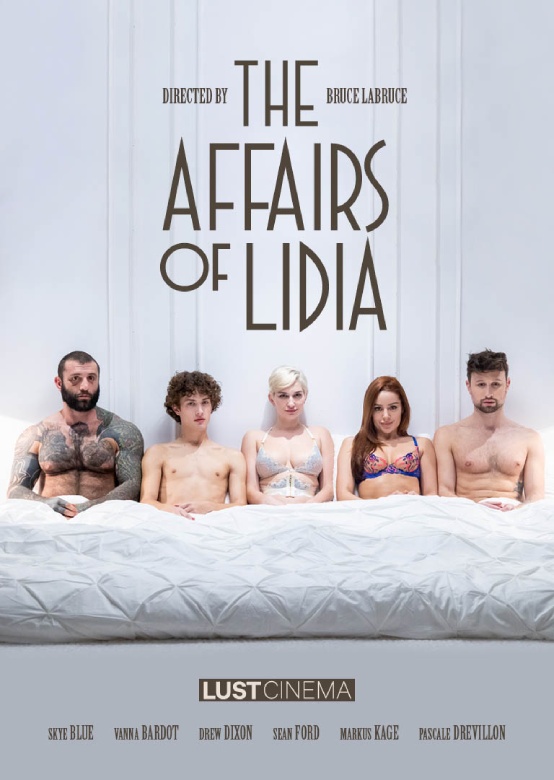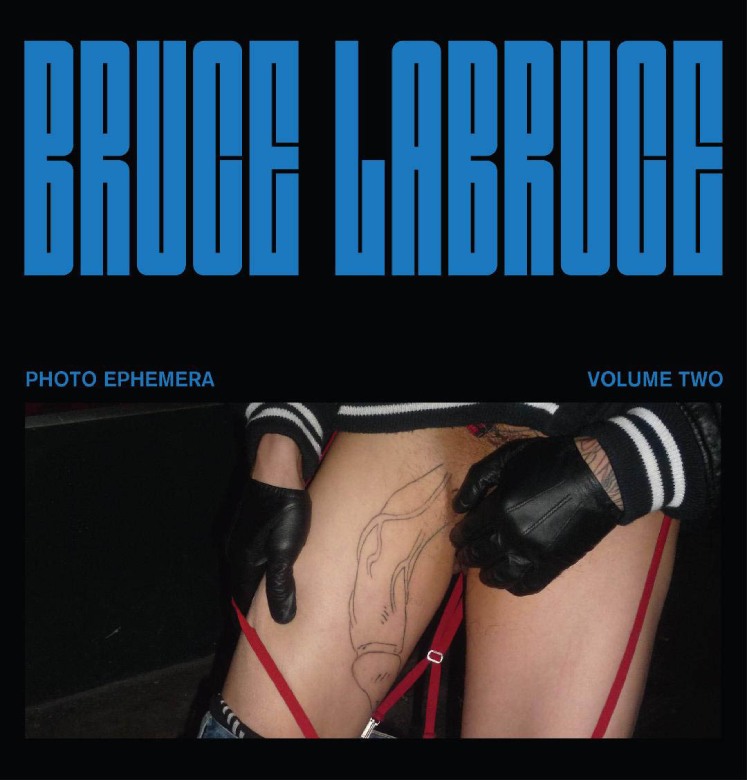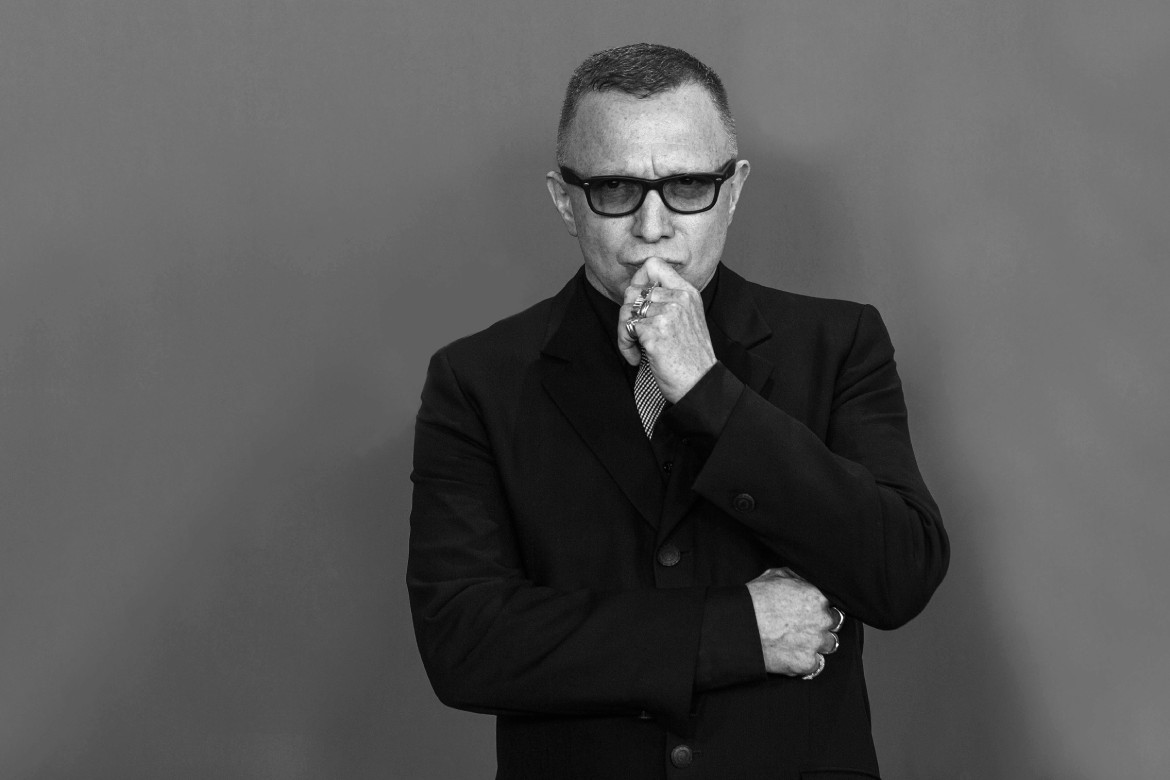Provocateur is probably the most accurate word to the describe Bruce LaBruce, a Toronto based, multi-talented, multi-disciplinary artist, whose mediums are film, writing, and photography.
One of his first turns as a provocateur was when he co-edited queer punk zine, J.D.s from 1985-1991, and then went on to write, edit, and photograph for more mainstream journalism writing for Canadian and American music and cultural publications including Blackbook Magazine, Exclaim, Nerve.com, The Guardian, and Index Magazine.
Moving into filmmaking in 1991, LaBruce had a breakout hit in 1996 with Hustler White, a tongue in cheek, satirical film about gay hustlers in Los Angeles, which he cowrote and directed with Rick Castro. The film became a gay cult classic, featuring explicit sex scenes, and paved the way for LaBruce’s future projects regarding sexual taboos and pornography, and establishing him as a major figure in the new Queer Cinema movement created in the 1990s.

No skin poster in Japanese (Photo courtesy Bruce LaBruce)
LaBruce has been involved in all aspects of film, including directing, acting, producing, and cinematography in over 40 narrative and documentary films, music videos, shorts, and tv series. Controversy followed LaBruce as he expanded the boundaries of filmmaking and his film LA Zombies was banned from being screened at the Melbourne International film Festival in 2010 by Australian censors. Many of his other films, including Otto, Super 8 ½, and No Skin Off My Ass, have received X ratings from film boards. In 2015, MOMA New York, embraced LaBruce’s career, controversy and all, with a retrospective of his films.
In between his prolific body of films, LaBruce has pursued his other artistic talents as a porn and fashion photographer, theater director, film critic, essayist, and writer of two memoirs.
Where were you born and where did you grow up?
I was born in a small town on Lake Huron in Ontario, Canada, about 150 miles northwest of Toronto. I grew up on a small 200-acre farm. My father was a dairy and beef farmer, a hunter, and a trapper.
At what age did you know you were gay?
I think I’m one of those gays who knew he was gay since as far as he can remember. I was an adorable but sickly child with bright orange ringlets. I was often mistaken for a girl right up until I was 12 or so. My parents knew something was up when I had a birthday party at the age of 6 and when the guests arrived, they discovered that I had only invited girls- about a dozen of them!
What were you like as a teenager and what group of kids did you hang out with in high school?
I was bullied as a young teenager by some very tough farm boys who were much bigger than me, but I survived by my wits. I was always near the top of the class which, when I was in public school, made me a target for bullies. Because of my ravishing red hair, my nickname for a time was Cherry Blossom. I was often teacher’s pet, but when I learned that that made me the target of bullies I started to rebel against the teachers and become an evil brat! It wasn’t until high school, when I was about 15 or 16, that being at the top of the class started to pay off, and I even became somewhat popular. I was also a bit of a class clown and mouthy as hell. Of course, this was in the 70’s, so even though everyone subconsciously knew I was gay, there was never any mention of it outside of occasionally being called a fairy, a femme, or a fruit. But I was always an outsider of sorts, and I formed very strong bonds of friendship with the girls who had the worst reputations in the school. But they were also the most mature and smart and funny people around! I was always a shit disturber. For my Grade 10 Russian history class I wrote a paper called “Communism: World Saviour.” My teacher said all my sources were ridiculous and fallacious, but it was so well-written and argued that he had to give me a top grade.
When did you start your artistic career and what were some of your first projects?
I didn’t take art class in high school for some reason, although I took theatre classes. I left the farm when I was 18 to enter the film school of York University in Toronto with the intention of becoming a film critic or academic, but everyone in the department had to take two years of film production. (I also separately took creative writing and poetry classes, as well as a first-year course called “Protest Literature and Movements.”) So, I studied still photography my first year and super-8 filmmaking my second year. My teachers encouraged me to go into film production, but I was a technophobic sissy who thought he could never make a real movie, and I couldn’t afford to bankroll film projects, as you were expected to do, so I went into Film Theory. I was incredibly fortunate to study with the famous international film critic Robin Wood, the favorite of the likes of Truffaut and Chabrol and Scorsese. He wrote a groundbreaking article called “The Responsibility of the Gay Film Critic” when he came out later in life. He was a tremendous mentor, and when I got my master’s degree in Film Theory and Social and Political Thought, he was my thesis supervisor. I was also on the editorial board of a magazine called Cine-Action that he started with some of his colleagues and grad students. But meanwhile I was hanging out in the downtown art and punk scenes and started making my own underground experimental queer super 8 films. I also co-founded the fanzine J.D.s, ”which begat the queercore movement. For the fanzine I wrote short stories, took photographs, did lay-out and collage, wrote manifestos, and made films, so it was very multidisciplinary. I eventually made my first feature, a sexually explicit queer punk super-8 movie called No Skin Off My Ass in 1991. It became a cult film and played at international film festivals around the globe. That’s when I knew I would become a filmmaker.


Saint Narcisse (Photo courtesy Bruce LaBruce)
Some of your work has been deemed controversial and even banned in certain cases. What is your reaction to these situations, and can you tell us why you think they were banned?
Actually, I’m happy to report that my latest movie, an independent feature called Saint Narcisse, was just banned from Amazon Prime in the US, the UK, and France after having already been up on the platform for five months. We were suddenly notified that it had “offensive content” and was being removed. I’m obviously still pushing some buttons! I always considered the use of pornography in my work as political. It was a way of being unapologetic and completely open and in-your face about gay sex and being gay. I was quickly branded a pornographer, as was my producer, Jurgen Bruning, who went on to start the first ever porn company in Berlin.


The Affairs Of Lidia (Photo courtesy Bruce LaBruce)
So since then, I’ve been making both independent features that may have nudity but not much, if any, explicit sex, and actual industry porn films, my latest being a feature film called The Affairs of Lidia that I recently made for Erika Lust, an ethical feminist porn company based in Barcelona. But whichever type of film I make, I always approach filmmaking with a punk ethos, which means pushing boundaries and exploring the outer limits of representation. My films are often about fetishes, everything from amputees to skinheads to extreme left-wing revolutionaries to gerontophilia to twincest, so that often gets me into trouble, even though I present the idea of fetish as something romantic and humanistic. One of my most extreme films, L.A. Zombie, a “gorn” (gore plus porn), was banned in Australia, but it also played in competition at the Locarno Film Festival. Getting banned is fun and makes you more famous, but censorship is always a drag.
Is there a through line or thread that connects the various disciplines you work with or is each project its own entity?
I’m also a photographer, and I recently published a book of my photo work, Death Book, from Baron Books. I do fashion and porn photography, and I also take photos on the sets of my movies. I also write film criticism and essays, and I’ve published two memoirs, The Reluctant Pornographer and Porn Diaries. I also have gallery openings at which I often do live performances, and I’ve directed a number of theatre pieces in Berlin. Because of my multi-disciplinary approach, it all feels like it’s coming from the same place, an idea of personal expression and open creativity that comes in many forms.
Do you have a preferred artistic medium?
Making movies!
What was it like having a retrospective of your films at MOMA in New York and how was the audience reception?
It was a wonderful experience. It’s always pleasant for your work to be recognized, and because of the controversial and often pornographic nature of my work, it was particularly gratifying to be showcased by such a high-profile institution. The screenings drew good crowds, and I would say often had a mixed reception. Some of the regular MoMA members were a bit gobsmacked and somewhat riled up by the movies, and I had some very lively Q & A’s, but overall, I think people enjoyed the work.
Is queer culture in Canada different than in the U.S. and if yes, what are the differences?
I find that the queer cultures currently in the U.S. and Canada are pretty much aligned. Both have become decidedly more assimilationist and less adventurous in the “post-liberation” era. There is far too much political correctness and pre-censorship. Many mainstream LGBTQ festivals, such as Frameline in San Francisco, Outfest in L.A. and InsideOut in Toronto, that used to show my films as centrepieces, are no longer interested in showing my work at all because it is often decidedly un-P.C. Instead, my films play at international, non-queer festivals in such far flung cities as Istanbul, Moscow, Toronto, Vancouver, Buenos Aires, Rio de Janeiro, Karachi, Helsinki, Reykjavik, Belfast, Glasgow, Ljubljana, Munich, etc. The queer festivals that are most interested in my work are more in South America, Eastern Europe, and the Balkans, for example, places where LGBTQI rights and activist movements are still very directly political and urgent. In Canada and the U.S., the “queers” of the assimilation movement have lost a lot of their edge and spirit of radicalism and subversion in their quest to become accepted by the heteronormative majority. I always prefer to be an outsider than an insider. Canada can be even worse than the U.S. in that regard. Canada can be quite Stalinist when it wants to be!
What artist living or dead would you like to spend a night with?
Leonardo Da Vinci.
Your latest film Saint Narcisse, which I saw at the A Shaded View Film Festival in Paris last December, is a throwback to the 70s horror film genre. Please tell us why you decided on such a specific genre?
I have a particular fondness for cinema from the late sixties to 1980. It was a period when filmmakers were deconstructing the myths of Hollywood, and by extension, the USA, debunking them and challenging them. There was a revolutionary spirit in both form and content, and an emphasis on individual expression and political intervention. The gay, black, feminist, and sexual revolutions were all in full swing, and it was reflected in cinema. The seventies is also aesthetically my favorite decade of the 20th century. My DP, Michel La Veaux, who came out of that era, used lenses and a lighting kit and style of the period to recreate that particular aesthetic in camera, as opposed to in post. We shot it in the style of a seventies 35mm Quebec feature. It is a kind of my love letter to Quebecois Cinema, which in the 70’s often addressed a lot of taboo subjects, skeletons in the closet, ghosts from the past, rape, incest, the sexual kinkiness of the Catholic Church, etc. I started out wanting to make a film about “twincest” (it was the working title), the phenomenon of romance and sexual relations between twins, which is not that uncommon both in everyday life and in the world of fetish and porn. Twincest is probably the least controversial and most socially accepted form of incest owing to the fact that twins are unusually close emotionally and often identical physically. It’s as if the desire to make love to yourself, to a projection of your own image, is somehow more acceptable. I also take this as a starting point for an investigation into narcissism, the ideological white noise of the current era.
I love the title of your book The Reluctant Pornographer, which is described as a pre-mature memoir. Why that title, what’s a premature memoir, and what are some of the key moments in the book?
I’ve always had feelings of ambivalence about porn, especially industry porn, particularly from a feminist perspective. I’m also relatively introverted, so performing sex in my own films was sometimes a bit traumatic, especially when underground films I made that I expected never to be seen outside of punk venues or alternative art spaces in Toronto started to be screened internationally at major film festivals. So The Reluctant Pornographer, which is more or less a personal diary, allowed me to express this ambivalence, but also ultimately to own being a pornographer without shame, and to express solidarity with pornographers. I called it premature because I wrote it when I was still only in my thirties, even though I felt like I’d already lived a lifetime!


Photo Ephemera (Photo courtesy Bruce LaBruce)
What are some of your upcoming projects?
I am writing new scripts for various producers for movies I want to make. I also have a couple of photo books coming out from Baron Books called Photo Ephemera (Volumes One and Two), and a coffee table photo book called Fixations from Milos Mesas Publishing. Plus, lots of other side projects!
You may also enjoy
Tom Prior, Star of the Gay Biopic, Firebird
John Cameron Mitchell Re-Releases Ground Breaking “Short Bus”
John Cameron Mitchell Rereleases His Groundbreaking Film ‘Shortbus’


